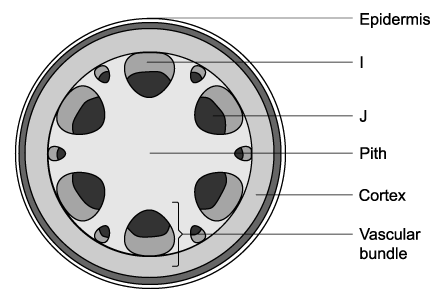The image below shows a potato plant. Potatoes grow tubers, which are underground storage organs.
Actively growing tissues have a high demand for carbohydrates. This means that a lot of phloem sap is directed to these tissues and requires sucrose to be unloaded in large amounts.
In an investigation, potato plants were modified by having a gene for invertase inserted into their DNA so that the gene would be expressed in the tubers. Invertase is responsible for catalysing the hydrolysis of the disaccharide sucrose.
A trial experiment was carried out to compare the properties of the modified plants with those that had not been modified. After harvesting, the tubers of three of each type of plant were compared. The results are shown in the table below.
| Modified | Not modified |
Mean number of tubers per plant | 2.2 | 5.3 |
Mean mass per tuber / g | 49.7 | 16.8 |
Mean sucrose concentration / mg g-1 of tuber mass | 1.4 | 13.7 |
Mean glucose concentration / mg g-1 of tuber mass | 36.3 ± 3.5 | 1.9 ± 0.3 |
Invertase activity / arbitrary units | 62 | 1 |
In the modified plants, the unloading of sucrose is increased in the tubers compared to those that were not modified.
The transport of sucrose to the tubers was also increased in the modified plants.
Using the data and the information given, deduce a possible mechanism to account for the increased unloading and transport of sucrose in the modified plants.

























